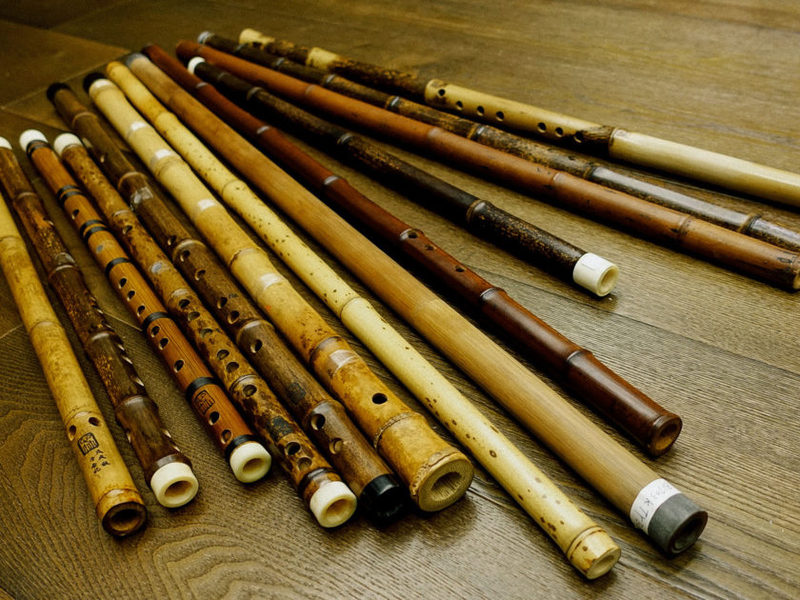Dizi 笛子
Dublin Core
Title
Dizi 笛子
Subject
Bamboo, Chinese music, Sound
Description
The dizi is a Chinese transverse flute, a major Chinese musical instrument.
Date
Han Dynasty (206 BC – 220 AD)
Format
Long, Cylindrical
Type
Craft
Crafts Item Type Metadata
Crafting Methods
The dizi is made from a straight stalk of bamboo with any internal nodes removed to produce a cylindrical bore. They are made in various lengths. Just above the blowhole the bore is blocked with a cork stopper, leaving only the far end of the flute open. Six fingerholes, nearly equidistantly placed, are drilled into the lower half of the tube; there is no thumbhole on the reverse side. A distinguishing feature of the dizi is the inclusion of a mirlitone--a membranophonic sound modifier consisting of a hole covered with a tissue paper-thin bamboo membrane that vibrates sympathetically when the flute is sounded. This hole is located between the blowhole and the first fingerhole. Vent holes at the far end determine the acoustical length of the flute, and can be used to tie an ornamental tassel to the instrument. Several rings of silk line are tightly wound around the flute and covered with red lacquer to keep the bamboo from splitting.
Materials
Bamboo
Usage and Application
In various forms it is used today in many regional and national forms of Chinese music for solo, small ensemble, and orchestra performance. In the north a relatively short dizi referred to as the bangdi is heard in certain forms of village folk and ritual ensembles. Various versions of this flute have been used in regional opera ensembles for centuries.
Collection
Citation
“Dizi 笛子,” CCCH9051 Group 64, accessed January 21, 2026, https://learning.hku.hk/ccch9051/group-64/items/show/28.

